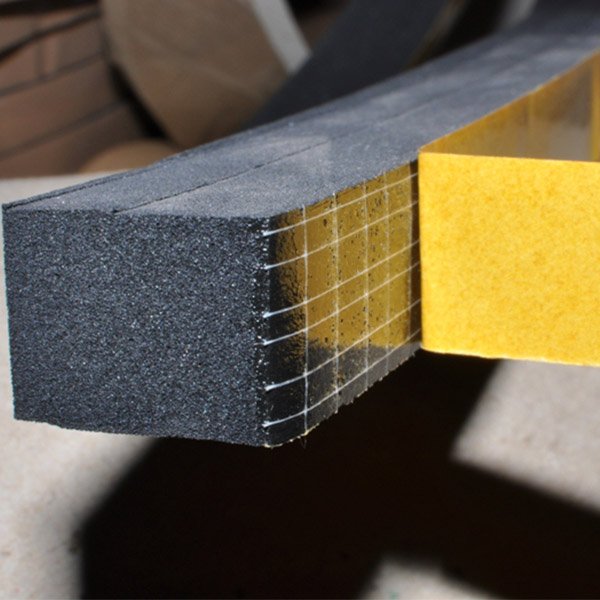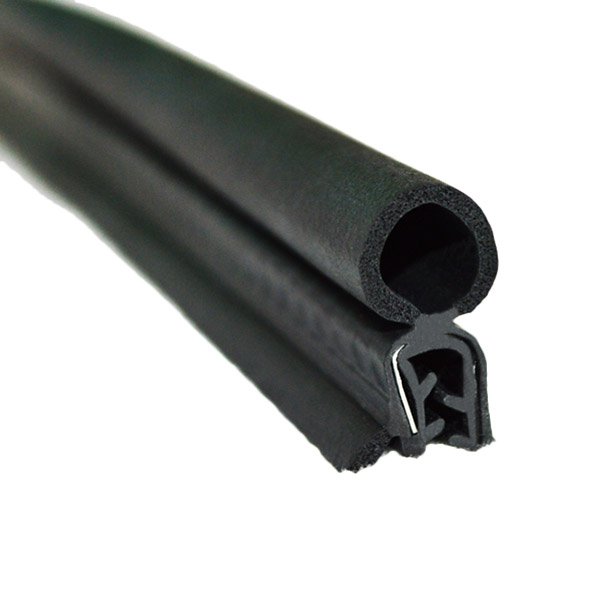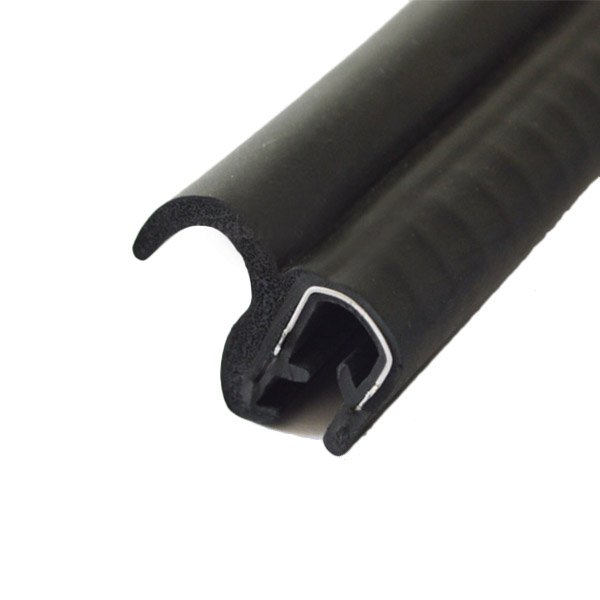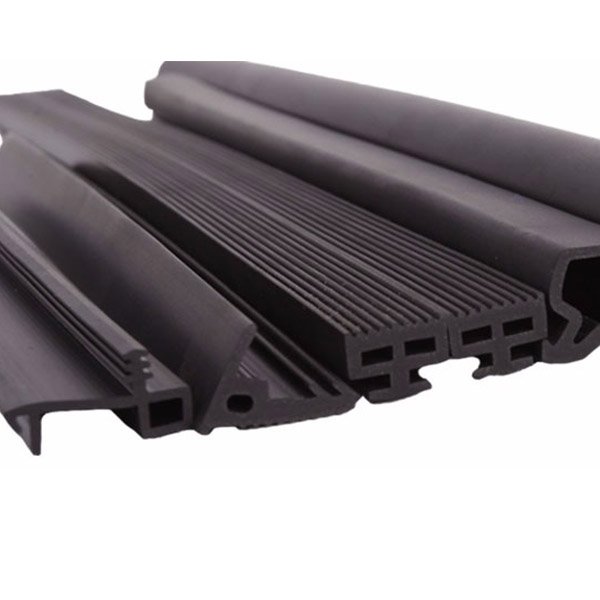Weather stripping for doors has always been essential to every house or building, even small cabinets of different applications. Door seal strips or weather stripping for doors are made of synthetic rubber or plastics. And they primarily fill the gap between the door jambs. As a result, door seal strips keep the indoor environment temperature constant, resulting in a 15% cost-effective solution.
We brought this article to explain different weather stripping types for doors popular in most buildings and apartments. “Door Seal Strip: DIY Installation Guide” will help you understand installation tricks of door seal strips in your house. Each type of weather strip for doors below describes the unique applications. Besides it will also guide you directly to the manufacturer’s specific product page.
Weather Stripping for Doors: You Should Know
As mentioned, the door seal strip’s primary goal is to prevent air leaks from indoor and outdoor environments. Doors and windows are the primary barriers between these two environments. Therefore, it is necessary to consider the gaps or holes in these barriers that might create air-leaking.
Before we jump into the details of each type of weather stripping for doors, we should first understand where to install these door seal strips. You can install weather stripping in four locations of the door, depending on the type and sealing effects.
- Upper corners: In most doors, upper, left, and right jambs combine, resulting in easy sealing. Some entries may not have such frames, so you should consider the upper corner of the door separately.
- Between the doors or along with the jambs: These types of doors are popular for large entries. They are also popular as French doors. French doors usually are two-sided, and in between, there’s a possible gap that you should seal.
- Hinge corners: The door and hinges are the crucial places you should consider. Loose fitting or a broken hinge might cause unwanted leaking.
- Door bottom: The door bottom is between the bottom side of the door and the floor. It is a specific position where the air leaks simultaneously.
Types of Weather Stripping for Doors
You must choose the best option to get the best result from door seal strips. Don’t worry! We know that it is not easy to find the ideal one from a wide selection of materials and types on the market. In this article, we will walk you through different types of door seal strips for other applications and help you choose the necessary weatherstripping in a breeze. Read on to learn more information.
Door Seal Strip for Typical Doors
Typical doors include our everyday houses, apartments, offices, shopping malls, etc.; sealing them is easy. Here are six main door seal strip types based on positions and materials. You can get six main door seal strip types based on the positions and material types.
- Plain felt weather stripping for doors: Felt door seal strips are the most popular weather stripping for doors. The primary materials of these types of door jamb weatherstrip are cotton, polyester, and wool.
- V-strip: These door seal strips are also popular as tension strips. These weather-stripping doors are easy to install. All you need to do is to cut the specific length. The top and two horizontal sides of the door require v-strips. In some cases, the door bottom may also need a v-strip.
- Metal weather stripping for doors: Metal weather stripping ensures longer life than typical synthetic rubber or plastic door seal strips. These types of door seal strips are suitable for highly harsh environments. Besides, you can opt for various metal types, such as zinc, aluminum, or steel.
- Tubular rubber or vinyl door seal strips: Tubular door seal strips are better than felt weather stripping. If you can install it properly, this weather stripping for doors will last over five years.
- Door sweeps: These weather strippings are suitable for filling the gap between the door bottom and the floor. Door sweeps are incredibly useful in preventing contaminants, unwanted airflow, or insects from entering.
- EPDM Rubber or closed cell foam tape weather stripping for doors: EPDM is a long-lasting material, and the door weather seals of this material are the best for the safety and security of the door. Besides, these weather stripping types are suitable for all kinds of doors and windows.
Electric Cabinet Door Seal Strips
Electric cabinets are found in every house, building, apartment, shopping mall, factory, and restaurant. These cabinets come as small or large, depending on the complexity of all the breakers and electrical connections for the whole building. It is essential for every building and apartment as it is the heart of the power supply of the building.
The electric cabinets also require sealing to protect against humidity, dust, and insects from entering. On the other hand, EPDM is the favored material used to manufacture electric cabinet door seal strips, which is an excellent electrical insulator. Besides, these weather-stripping doors feature good anti-friction, anti-aging, and anti-corrosion effects.
Seal strips for cabinet doors are suitable for different applications, such as cross-connection cabinets, wiring cabinets, control cabinets, lighting cabinets, battery cabinets, and protection cabinets. Besides, electric cabinet weather stripping for doors is also famous in windows, containers, cars, tractors, and other automobiles.
Dust Seal Strips for Cabinet Doors
Vulcanized weather stripping for doors is weather and corrosion resistant. PVC generally extrudes this weather stripping for doors, updated PVC, EPDM, TPE, and silicone. Except for electric cabinet doors, these door seal strips are suitable for steel, aluminum, windows, wooded, automobile, and even garage doors. The primary goal of this type of door seal strip is to prevent dust, insects, water, and even noise from entering the cabinet.
Cabinet door seal strips are an excellent choice for any cabinet type. The kitchen cabinets are the best examples of the door rubber seal application. As we all know, excessive humidity will gradually make the kitchen room oily and sticky. In this situation, the equipment and tools used for cooking also become dirty and moist. Cabinets with door seal strips are an excellent option for keeping a kitchen room clean and hygienic.
On the other hand, the dust control room in most factories requires cabinet door seal strips. Besides, other applications such as boats, marine, and ships require high-quality vulcanized weather stripping for doors to prevent mostly water from coming inside.
Rubber Door Seal Strips for The Shower Door
The shape of shower door seal strips varies based on the different types of shower rooms. The materials used for these door rubber seals are rubber, polycarbonate, or vinyl. Pre-taped and push-on are the most common door seal strip types for shower doors. Some weather stripping doors have a bulb, flat or star-shaped structure on top of the door weather seals to fit the door track. However, T-top door seal strips are suitable for snapping on the door sliding rail.
The shower door’s rubber seal strips provide good shockproof, heat, and sound insulation qualities. Rubber shower door seals’ best qualities are high flexibility and compression, aging resistance, chemical resistance, and ozone resistance. This type of weather stripping for doors can withstand up to 10MPa of tensile pressure. With a wide operating temperature range, the lowest temperature is up to -45 °C, and the highest is up to 160 °C.
Types of Door Bottom Seal Strips
Door seal strips that cover the openings at the bottom part of the door are popular as a door bottom seal. They are suitable for various applications to block unnecessary door bottom openings. The door installation process usually keeps a little gap at the bottom to let the door swing correctly. In this case, we can use door bottom seal strips to prevent the openings and ensure the door is hanging perfectly. There are five significant types of door bottom seal strips:
- Brush door sweep: A nylon brush attached to an aluminum plate sweeps and cleans the dust beneath the door.
- Flat door sweep: This door bottom seal has a rubber base instead of a nylon brush. The performance of this type of door bottom seal is excellent. It prevents dust and insects from coming inside and tightly prevents airflow.
- Adhesive door seal: This type of door bottom seal doesn’t have an aluminum plate but has self-adhesive features. You can directly put this weather stripping for doors at the bottom of your door.
- Double draft seals: This door sweep has a double draft on both sides of the door. These door sweeps are handy because they don’t need adhesives, or an aluminum plate attached to the door.
- Door seal strips: This seal strip type is as popular as a v-strip at the door bottom.
Conclusion
Weather stripping for doors has recently gained popularity in every country, especially in winter. It grants you a closed door free from air leaks. Depending on various architectural changes in the buildings, the type and material of the door rubber seal also change. As a result, many types of door seal strips are found in the market.
How do you get the most suitable door seal strip from a broad selection on the market? In this case, we created this article to introduce some of the most popular door seal types you might notice in the market to give you a general idea of what type of weatherstripping for doors is suitable for your house. Still, if you can’t find the desired type or feel confused about making the right decision, please get in touch with us.




